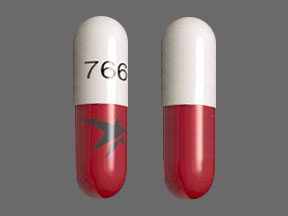Isavuconazonium Dosage
Medically reviewed by Drugs.com. Last updated on Jan 28, 2025.
Applies to the following strengths: 186 mg; 372 mg; 74.5 mg
Usual Adult Dose for:
Additional dosage information:
Usual Adult Dose for Aspergillosis - Invasive
Loading Dose: 372 mg IV or orally every 8 hours for 6 doses (48 hours)
Maintenance Dose: 372 mg IV or orally once a day
Comments:
- Isavuconazonium sulfate is the prodrug of isavuconazole; 372 mg of isavuconazonium sulfate is equivalent to 200 mg of isavuconazole.
- Maintenance doses should be started 12 to 24 hours after the last loading dose.
Uses: For the treatment of invasive aspergillosis and invasive mucormycosis
Usual Adult Dose for Mucormycosis - Invasive
Loading Dose: 372 mg IV or orally every 8 hours for 6 doses (48 hours)
Maintenance Dose: 372 mg IV or orally once a day
Comments:
- Isavuconazonium sulfate is the prodrug of isavuconazole; 372 mg of isavuconazonium sulfate is equivalent to 200 mg of isavuconazole.
- Maintenance doses should be started 12 to 24 hours after the last loading dose.
Uses: For the treatment of invasive aspergillosis and invasive mucormycosis
Renal Dose Adjustments
Mild, moderate, or severe renal dysfunction: No adjustment recommended.
Liver Dose Adjustments
Mild to moderate liver dysfunction (Child-Pugh A and B): No adjustment recommended.
Severe liver dysfunction (Child-Pugh C): Data not available
Comments:
- This drug should be used in patients with severe liver dysfunction only if the benefits outweigh the risks.
Precautions
CONTRAINDICATIONS:
- Known hypersensitivity to the active component
- Coadministration with strong CYP450 3A4 inhibitors (e.g., ketoconazole, high-dose ritonavir [400 mg every 12 hours])
- Coadministration with strong CYP450 3A4 inducers (e.g., rifampin, carbamazepine, long-acting barbiturates, St. John's wort)
- Familial short QT syndrome
Safety and efficacy have not been established in patients younger than 18 years.
Consult WARNINGS section for additional precautions.
Dialysis
ESRD: No adjustment recommended.
Other Comments
Administration advice:
- Administer IV formulation via an infusion set with an in-line filter (pore size 0.2 to 1.2 micron).
- Infuse the IV formulation over a minimum of 1 hour in 250 mL of compatible diluent (to reduce risk for infusion-related reactions); do not administer as IV bolus injection.
- Do not infuse with any other IV drugs.
- Flush IV lines with 0.9% sodium chloride injection, USP or 5% dextrose injection, USP before and after infusion.
- Avoid unnecessary vibration or vigorous shaking of the diluted IV solution; do not use a pneumatic transport system.
- May switch between IV and oral formulations (bioequivalent); no loading dose needed when switching between formulations.
- Swallow capsules whole; do not chew, crush, dissolve, or open capsules.
- Administer capsules with or without food.
- For nasogastric (NG) tube administration, administer the reconstituted injection solution within 1 hour of reconstitution.
- To administer, connect the syringe containing the reconstituted solution to the NG tube to deliver the dose.
- After administering the dose, administer 3 rinses (5 mL each) with water to the NG tube.
Storage requirements:
- Capsules: Store at 20C to 25C (68F to 77F) in the original bottle to protect from moisture; excursion permitted to 15C to 30C (59F to 86F).
- Injection (unreconstituted vials): Store at 2C to 8C (36F to 46F) in refrigerator.
- Injection (reconstituted solution): Should use immediately
- For IV administration: May be stored below 25C up to 1 hour before preparation of the patient IV infusion solution
- For NG tube administration: Should administer within 1 hour of reconstitution
- Injection (diluted IV infusion solution): Complete iv infusion within 6 hours of dilution at room temperature (20C to 25C [68F to 77F]); if this is not possible, refrigerate (2C to 8C [36F to 46F]) the infusion solution immediately after dilution and complete the IV infusion within 24 hours; do not freeze.
Reconstitution/preparation techniques:
- For IV administration of the injection formulation: Requires reconstitution and then dilution before infusion
- For NG tube administration of the injection formulation: Requires reconstitution before administration
- The manufacturer product information should be consulted.
IV compatibility:
- Compatible diluents: 0.9% sodium chloride injection, USP; 5% dextrose injection, USP
General:
- Specimens for fungal culture and other relevant laboratory studies (including histopathology) should be obtained before therapy to isolate and identify causative organisms; therapy may be started before results are known, but once available, antifungal therapy should be adjusted accordingly.
Monitoring:
- General: For drug-related side effects in patients with severe liver dysfunction
- Hepatic: Liver-related laboratory tests (at the start of and during therapy); for more severe hepatic injury in patients with abnormal liver-related laboratory tests (during therapy)
Patient advice:
- Read the US FDA-approved patient labeling (Patient Information).
More about isavuconazonium
- Check interactions
- Compare alternatives
- Reviews (3)
- Side effects
- During pregnancy
- Drug class: azole antifungals
- En español
Patient resources
- Isavuconazonium oral/injection drug information
- Isavuconazonium (Intravenous) (Advanced Reading)
- Isavuconazonium (Oral) (Advanced Reading)
- Isavuconazonium Sulfate Capsules
Other brands
Professional resources
Other brands
Related treatment guides
See also:
Further information
Always consult your healthcare provider to ensure the information displayed on this page applies to your personal circumstances.


